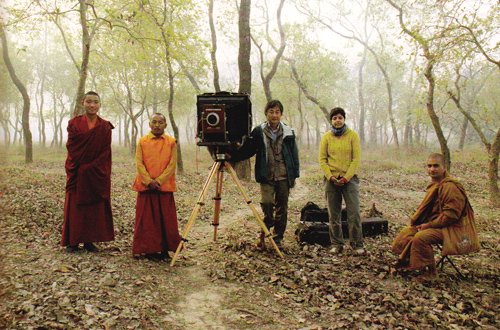
Noa Jones writes fiction and creative nonfiction. She is the writer and editor of Art in Action: Nature, Creativity, and Our Collective Future. Her first book was Travellers & Magicians, about the making of Dzongsar Khyentse Rinpoche’s film of the same name. Jones is from New York and Colorado. She is currently working on a novel while heading in a westerly direction using an aroundthe- world airplane ticket. In “Where the Buddha Woke Up” (page 60) she recounts the ups and downs of her adventures in Bodhgaya, India.
Bhikkhu Bodhi is an American Buddhist monk originally from New York. He was ordained in 1973 in Sri Lanka, where he lived for over twenty years, and was an editor for the Buddhist Publication Society from 1984 until 2002. In 2008, together with some of his students, he established Buddhist Global Relief, a Buddhist poverty-alleviation organization that provides food aid and educational assistance to the poor and needy throughout the world. In “Vision and Routine” (page 92) he explores the challenge of finding a balance between change and stability.
Kenro Izu has been photographing the world’s holy places since 1979. He shoots with a large-format camera customed-fitted to make 14 x 20 inch negatives, which he prints on watercolor paper hand-coated with platinum/palladium emulsion—a painstaking, three-day process. The results are nuanced, atmospheric photographs like those of Buddhist sacred sites accompanying the article “Undivided Mind” in this issue (page 40). Currently, Izu is working on a series, INDIA: Sacred Within, photographing India’s holy sites and the people who maintain them.
Alix Sharkey’s very first journalistic assignment was to interview the musician James Brown. “It’s been kind of downhill ever since,” says Sharkey, “apart from the time I interviewed Dzongsar Khyentse Rinpoche about his movie projects. That was cool, because he told me to make up the answers myself, saying they’d be more exciting.” In this spirit, Sharkey argues in “Gossip Boy” (page 56) that a little gossip can sometimes be a good thing. He lives in Los Angeles.
Felicia Megginson uses her image-making to initiate conversations about the internal and external forces at play in the formation of social identities. She calls her photographic process “purposeful wandering” and considers it to be something of an intermittent walking meditation. Her photographs on the cover and page 46 are from the series “Post No Bills,” shot during her time as an Artist in Residence at the Henry Street Settlement in Lower Manhattan. She lives, works, and sometimes meditates in Brooklyn, NY.